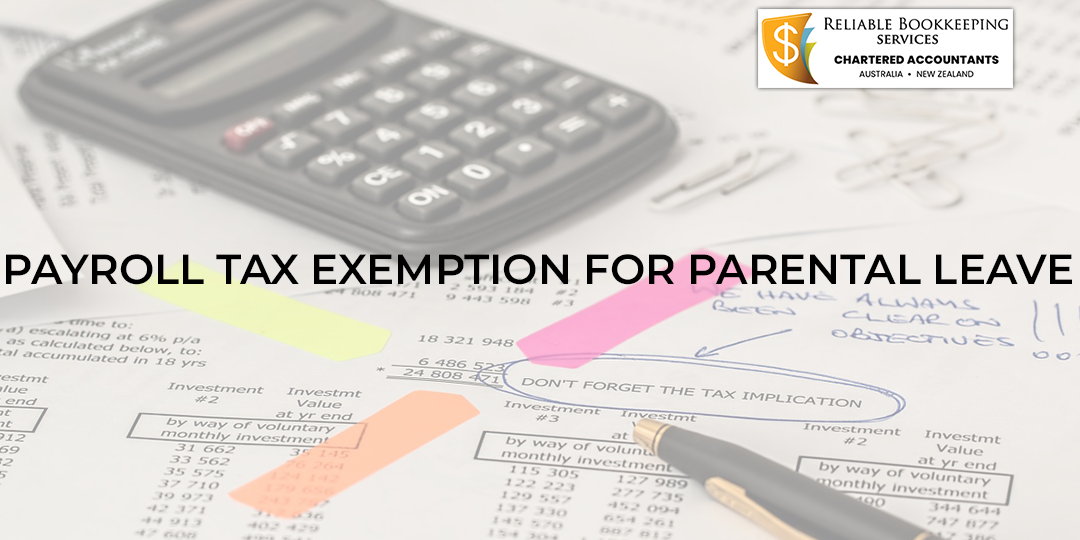Introduction – Under section 53, the Payroll Tax Act 2007 free from some of the wages. It got some changes and as per the new rules, from 1 July, 2019, paid or payable wage exemption to the employee at the time of adoption or maternity leave got extended for wages for the both the caregivers whether he is primary or secondary.
The updated Revenue Ruling, exemption for parental leave (PPTA-012v2) concludes that the new relief from tax is not applied to the candidate, who would get wages before 1 July, 2019. This exemption is not in sync with Revenue Ruling and not with the other Australian Jurisdictions.
Declaration- The parental leave exemption from the payroll tax:
- Is applicable to each wage kind that is payable or paid or payable of that leave, but not having any fringe benefits.
- It is applicable irrespectively whether the parental leave is taken during or after birth or a child or after adoption.
- It is applicable to wages being made by the employer to the employee for being the primary or secondary caregiver of the child.
- It is not applicable for the recreation, sick, annual or any of such kind of leave.
- For pregnancy or adoption cases, this is applicable too.
- It is limited to the 14 weeks maximum.
- This applies to the wages which are payable or being paid after 1July, 2019.
- Supportive records for getting the claim are highly necessary.
Primary Caregiver For a Child – The primary caregiver is here, the lady, who is pregnant with child, or parent who is responsible to give care and attention primarily to the child. Any one of the parents would be the primary caregiver at a time.
Secondary Caregiver For A Child – This would be the spouse or the domestic partner of the prime caregiver of the child. Domestic partner here means a person, who is registered domestic help with primary caregiver. Also, if a person is not married to the primary caregivers, but living like a couple can be the secondary caregiver on a genuine domestic basis.
Exempt Wages – Exempt wages are the salary, allowances, employer superannuation contributions and commissions payable or paid for the leave taken as primary or secondary caregiver of the child. Not other leave like sick, recreation or annual leave can be mixed with the same. Wages are related to the period of the parental leave to be exempt and it doesn’t include the payments made at the time of the parental leave. If any future or advance payment is made for the service, then should be returned after getting back from the parental leave. When an employee asks for parental leave in different arts, then exemption is applicable to the wages of every part.
Maximum Entitlement – A 14 week full leave was allowed for the full time employee at the time of pregnancy, or after birth or after adoption of the child as the parental leave. It can also be taken for longer periods to 28 weeks if you would work as the part time employee, but, at the part time workers, the exemption is restricted to a maximum of 14 weeks, which is to be paid as the applicable part time rates of the pay.
Record Keeping
Parental Leave For Primary Caregivers- To get exemption claimed for the parental leave for the primary caregiver of the child, an employer need to have the statutory declaration from the employee which would have mentioned that the person would be the primary caregiver of the child:
- For that, you need to show you are pregnant with a child
- If taking leave after childbirth, then have to show records that you were pregnant along with records of birth of the child.
- Need to show the records that you are the parent of the child or having the principal role in giving care and attention to the child.
Parental Leave for Secondary Caregivers – For claiming exemption of the parental leave for the employee, being a secondary caregiver for the child should give the statutory declaration from the employee.
- For that, you should have records being the secondary caregiver of the child.
- You need to show records that you are the spouse, or domestic partner of the primary caregiver for the child.

